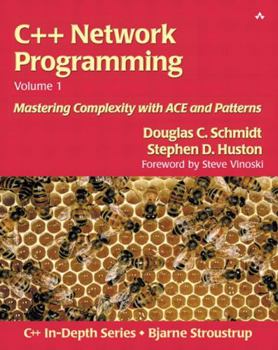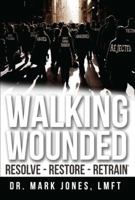C++ Network Programming, Vol. 1: Mastering Complexity with ACE and Patterns
Select Format
Select Condition 
Book Overview
As networks, devices, and systems continue to evolve, software engineers face the unique challenge of creating reliable distributed applications within frequently changing environments. C++ Network Programming, Volume 1, provides practical solutions for developing and optimizing complex distributed systems using the ADAPTIVE Communication Environment (ACE), a revolutionary open-source framework that runs on dozens of hardware platforms and operating systems.
This book guides software professionals through the traps and pitfalls of developing efficient, portable, and flexible networked applications. It explores the inherent design complexities of concurrent networked applications and the tradeoffs that must be considered when working to master them.
C++ Network Programming begins with an overview of the issues and tools involved in writing distributed concurrent applications. The book then provides the essential design dimensions, patterns, and principles needed to develop flexible and efficient concurrent networked applications. The book's expert author team shows you how to enhance design skills while applying C++ and patterns effectively to develop object-oriented networked applications.
Readers will find coverage of:
C++ network programming, including an overview and strategies for addressing common development challenges The ACE Toolkit Connection protocols, message exchange, and message-passing versus shared memory Implementation methods for reusable networked application services Concurrency in object-oriented network programming Design principles and patterns for ACE wrapper facadesWith this book, C++ developers have at their disposal the most complete toolkit available for developing successful, multiplatform, concurrent networked applications with ease and efficiency.
Customer Reviews
Rated 5 starsWonderful book!
I discovered ACE almost two years ago after a coworker told me about it. As a developer in the networking / streaming media / distributed computing space, i've all too often run into the problems that are inherent in developing this sort of software -- scalability, maintainability, not to mention all of those bugs ...ACE makes all of that much easier, and delivers the promise of true reuseability; not just classes, but common...
0Report
Rated 5 starsGreat reference to the ACE library
I had great expectations from that book.I can say that it had full-filed these expectations.The book is written by the finest writers !I am using ACE for more than 2 years, and that book is a greatstep towards complete documentations of that library.The book shows how to use ACE and its feature without having topass some *all* of the stiff curving learn.Worth the money indeed.Can't wait for the next volume !
0Report
Rated 5 starsGreat book on concurrent network programming
Doug and Stephen did a great job writing this book (I only wish it came out earlier ;-). Everything is clearly explained, from analysis, to design patterns, to low-level implementation details with copious, well-written code examples. Even tho I've used ACE for several years now, I still learned many new things from reading this book, and it will continue to be a great reference. I particularly liked their explanation of trade-offs...
0Report
Rated 5 starsEssential tools for your use - Highly recommended!
In the past, I have seen many posts on newsgroups from folks inquiring as to what *real world* C++ code is available for them to study so that they can learn *real-world* tools and techniques they can understand and thereafter really apply. ACE is such a body of code and this book does an excellent job of presenting what ACE is, what it does, how it does it, and, the part I like the most, WHY it does things the way it does...
0Report
Rated 5 starsexcellent notes on development experiences
I have worked on the development of large scale distributed networked systems for many years now, and have yet to see another so well organized text on the subject. It is an invaluable compendium that every network, distributed system, and application developer/programmer should keep handy.It conveys, clearly, concisely and precisely a wealth of experiences from the development/coding trenches that is hard to come by and is...
0Report












































